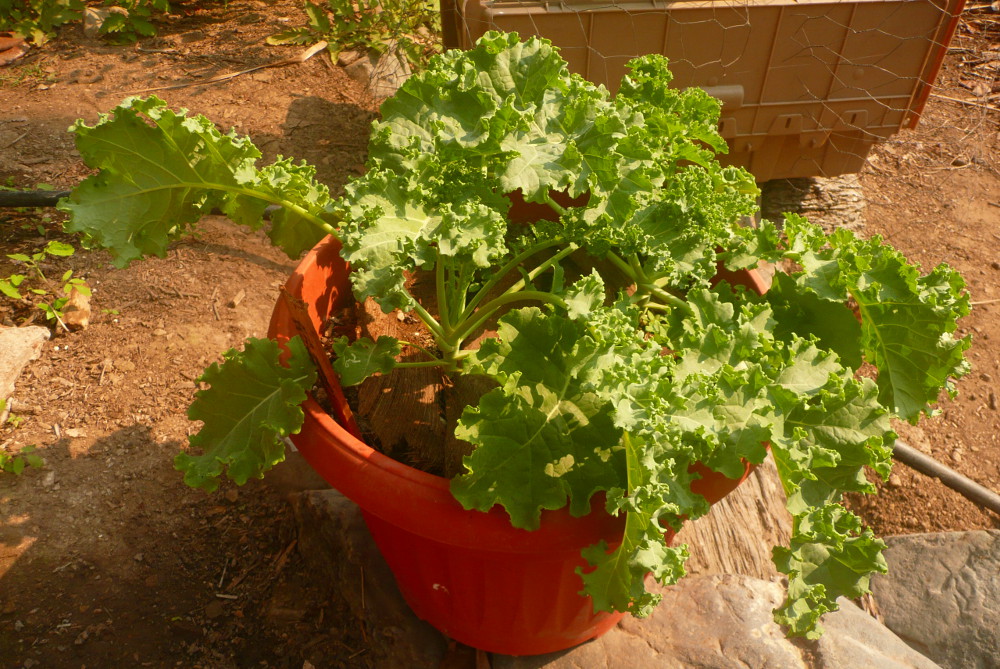Tropical vegetables in containers
It has been some time since I did a general update on my tropical vegetables container garden here in Zihuatanejo, Mexico. This year, lacking time to dedicate to the garden and general experimentation, I scaled back and stuck to a few of the tried and true greens that I just love to pick fresh off the vine.
I recently happened upon an article on growing tropical vegetables “… and growing vegetables in the tropics” on the Tropical Permaculture website. The article lists a number of veggies that they have found do well in hot and humid tropical conditions like the ones that reign here on the Pacific coast of Mexico. It has inspired me to compare their list of tropical vegetables with my own notes and experiences.
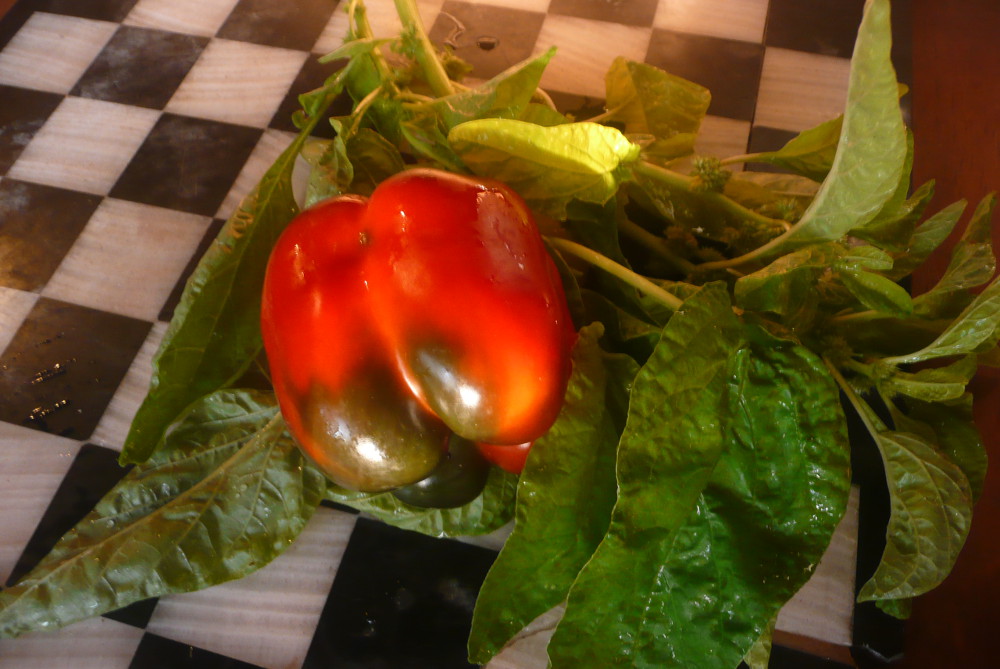
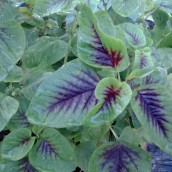
Red Leaf Amaranth, great in salads
Vegetables on Tropical Permaculture’s list that I have also grown successfully:
Amaranth — One of the easiest of tropical vegetables to grow. Although I don’t have it in my garden this year (except a few volunteers!), several amaranth varieties produce great tropical greens that can be used in salads and soups. I’ve had most success with the red leaf amaranth. (Learn more about edible amaranth.) The tender leaves taste much like spinach. I planted what’s known as white edible amaranth (really just green) the first year I gardened, and it grew well and made nice salad and cooked greens, but I found that the variety went to seed quite a bit earlier than the red leaf amaranth and besides, the red-mottled leaves are much more attractive. Amaranth will easily reseed itself if you let it.
Arugula (rocket) — I’ve had good luck with all arugulas I’ve tried. Some of them are: organic arugula rocket salad, arugula wild rocket salad, wasabi arugula, and astro arugula. Supposedly, astro arugula is even more heat tolerant than other varieties; however, I saw little difference. I prefer either the most common cultivated arugula or the coarser and thinner-leaved Italian wild arugula, which lasts longer in the garden. It is part of my garden every year.
Asian greens and Chinese cabbages — I’ve planted baby bok choy/pak choy, toy choy, choy sum, and tatsoi over the past two or three years, and it grows well in the cooler season (November through March), but declines quickly once the more intense summer heat starts. My preferences are toy choy and tatsoi. I have not tried any of the larger Chinese cabbages such as the Chinese one kilo slow bolt variety, also known as Napa cabbage.
Beans and the like — I have planted several beans successfully, but you need to sow enough plants to make the wait for harvest worth while, which I didn’t. Those I tried were edamame, long beans, black-eyed (cow) peas, and mainly, the Goa winged bean, which grows fabulously well here, and you can use the tender leaves and beautiful purple-blue flowers in salads, eat the beans and pods green, or eat the mature bean when dried. I haven’t grown any beans this year, but I will most likely sow both black-eyed peas and Goa beans in the future.
Bell peppers — Peppers generally like the heat, although the sea breeze and perhaps lack of enough direct sunlight (we live under palm trees) contributed to stunted fruit, the peppers I harvested were sweet and tasty. In past years I’ve planted sweet California wonders and sweet cherry blend of miniature peppers, which were fun and pretty, but I much prefer the sweet California wonders for eating. No peppers (other than hot chiles) in the garden this year, but they’ll be back!
Chard — I’ve grown ruby red Swiss chard a couple of times. I’ve found it discouraging to watch the plants struggle at first, but those that made it through the heat turned into wonderful, healthy, leafy greens with succulent stems that I could keep harvesting over a period of several weeks.
Chilli (chile) peppers — I have grown mild jalapeños, Serranos, chile piquin (similar to cayenne), Thai hot peppers, Hungarian banana peppers, and Anaheim peppers. Most grow into healthy little bushes that bear over several months and sometimes years. I have serranos and Anaheims in the garden right now, and I do want to try out some ancho/Poblano peppers next season.
Cucumbers — I’ve planted cucumbers twice, the second time straight in the ground instead of in a container, and had much more luck with them in the ground, even though the variety I chose was Spacemaster, most suitable for container growing. Cucumbers do tend to mature and become seedy and sour very quickly in this heat, and they are especially susceptible to molding in our humidity, so they aren’t the easiest of vegetable to deal with.
Eggplant (aubergine) — Ah, eggplants love the heat. They’ll take the high humidity, but on the other hand, they also won’t hold it against you if you forget to water them every once in a while. The varieties I found easiest to grow here are the small eggplant varieties, Thai green eggplant and Japanese long purple, but I also had a nice little harvest of Black Beauties one year. I was going to plant some eggplants this year, but the seeds I’d saved just didn’t germinate.
Okra — Okra is a joy to grow here. Put in 16 or 20 plants (you can plant 5 or 6 plants in each large pot) and you’ll have a steady stream of yummy okra pods heading into your kitchen for a long time. I’ve grown Clemson spineless (my favorite) and red burgundy okra. I purposely did not plant okra this year because I didn’t have the time to prepare the space, but I’m regretting it now!
Tomatoes — Tomatoes grow well here in the winter season and hearty cherry tomatoes grow practically year round, as long as you have the direct sun on them and good air flow around them. My garden doesn’t have enough sun at the moment, so I didn’t put any in this year, but I’ve not given up on them. I’ve tried growing (amongst others) better bush tomatoes, Bedouin Tomatoes, Lizzano cherry tomatoes, Cherry Sweeties, and Brandywine tomatoes, but my favorites are purple Cherokee and green zebra.
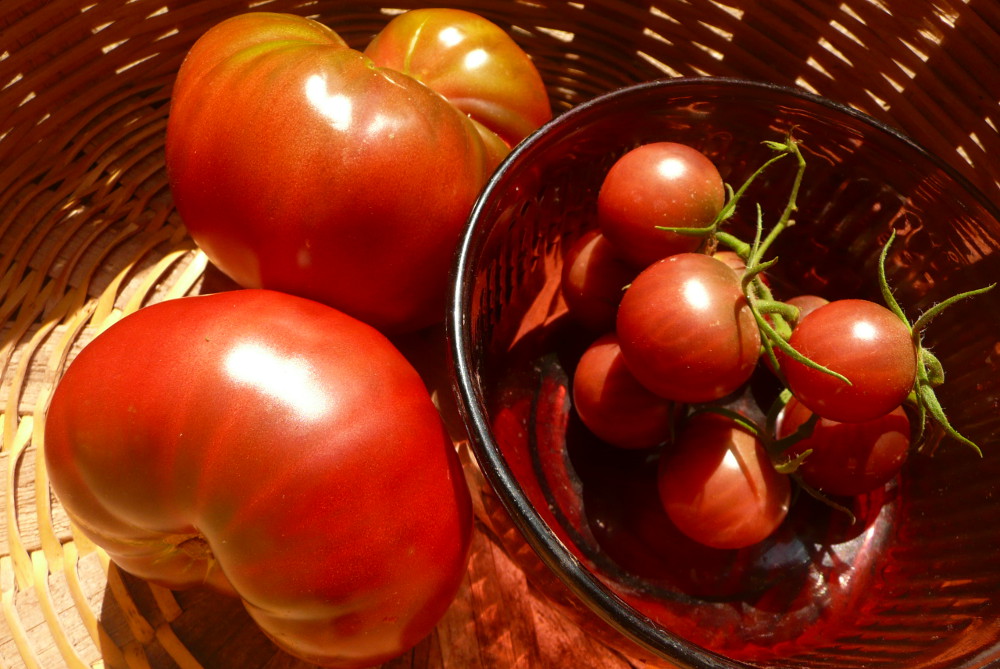
Other tropical vegetables or vegetables that will grow in the heat and humidity of the tropics. The following are not on Tropical Permaculture’s list, but I have grown:
Beets — I grew one large pot of beets, mainly for the greens, but the roots, though small, were sweet and delicious. The tops provided delicious greens over a period of many weeks, into months. I was quite impressed and surprised by how well they did grow. I sowed them only one year, and used a mixed blend of beet seeds. I will definitely sow beets again.
Carrots — One year I planted a large, round, deep pot with baby little finger carrots. They were actually quite wonderful, small and sweet when they finally matured enough to eat, but I found container carrots are almost more trouble than what they’re worth for the harvest they give you. They would do much better sown in larger tracts in the ground.
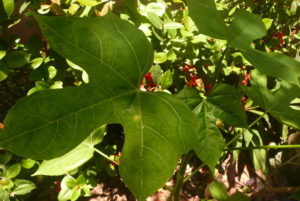
Chaya — Chaya, also known as tree spinach, is a native of Mexico and Central America and most prevalent in the Yucatan peninsula. It is a large bushy shrub growing up to several meters high, so cannot really be classed as a vegetable, but the leaves of the chaya are rich in protein and minerals and can be used as a cooked green and added to soups and stews. The caveats are these: The raw leaves contain a toxic substance, so even though eating a few of the raw leaves is okay, it’s safer not to eat the raw leaves at all, nor should any other part of the plant be ingested raw. You can cook the leaves in water for a minimum of 5 to 15 minutes and discard the cooking water. If you’d like to use chaya in soups or stews, cook the leaves separately, discard the water, and add the chopped cooked chaya to the dishes just before serving. Cooked chaya leaves don’t disintegrate into a mush like spinach, and they have a full-bodied, earthly flavor. + Chaya and Diabetes
Collards — I have had outstanding success with collards. I’ve tried Vates and Georgia southern. I found Vates handles the high heat better than Georgia southern, but both are worth having in your garden. I have tons of collards in my garden this year. They are so easy. Collard leaves can be blanched and used as wraps for veggie rolls, stuffed like grape or cabbage leaves, or used in any number of other ways. They will not fall apart. See recipe: Vegan Collard Rolls (AKA Cabbage Rolls)
Kale — Almost my favorite green of them all, kale actually grows in this heat! It bears for two years! I love having it in my garden. My favorite variety by far is Dwarf Curly Blue Kale, but I have also grown Russian red kale (which doesn’t like the heat very much) and Portuguese kale, which has a very hardy collard-like leaf. I couldn’t bear to not sow at least three pots of kale… and I think that next year, I’ll have to put in even more, and then have the two-year harvest staggered between this year’s and next year’s plants.
Malabar and New Zealand Spinach — Neither of these is really of the spinach family, but both can be used in similar ways and both take quite easily to the high heat of the tropics. Malabar spinach is a fleshy-leafed plant, somewhat gelatinous, that can be used in salads or in soups; it is common in the Caribbean islands. New Zealand spinach has sturdier leaves of a more kindly texture and a lovely flavor. Harvest the tender new leaves of the plant… they do well cooked and are also great in salads. New Zealand spinach is resistant to practically everything. The only reason I have Malabar spinach in the garden right now is because it reseeded itself. I’m kicking myself for not sowing some New Zealand spinach this year.
Turnips — One year, I grew only one container of Purple Top White Globe turnips and was surprised at the healthy and long-lasting harvest of turnip greens that culminated in a nice feed of small but tasty roots. Definitely worth trying in the tropics.
Chives and garlic chives — I’ve had both regular chives and garlic chives in my garden for at least three years, and they continue to thrive. Dig them up and separate them once a year or so. They are a constant source of great flavor for your kitchen. I grew the garlic chives from seeds, but the regular chives were purchased from a local nursery. Although I’ve tried many times, I have never been able to grow regular chives from seeds.
